Sea Moss Gold (125g) – The Best in Ocean Harvested Seaweed
$70.65
Our Sea Moss Gold is Mother Nature’s gift of vital nutrients and minerals for the whole body. Able to be made a part of any meal plan, buy today to start enjoying the benefits.
Product Weight: 125g (4.4oz)
Packaged Weight: 145g (5.1oz)
All prices on this website are in Australian Dollars (AUD).
For more information about our dispatch process, please refer to our Delivery Policy.
3 in stock
Description
Did you know that Sea Moss is popularly believed to contain as many as 92 of the 102 minerals found in the human body? Not only has it been regarded as a great source of nutrition for generations, but many have relied on it as a natural remedy for colds and flu due to its expectorant (mucus-expelling properties). It is understood that Sea Moss Gold contains what your body needs to support optimal health.
But, how easy is it to work with?
It is able to be made into a gel that you can use in all kinds of cooking, Sea Moss is great for:
- Thickening sauces
- Raw cakes
- Smoothies
- Juices, and so much more!
The gel has also been used by many as a topical application for the skin and hair to help with dryness and improve complexion.
But it’s not all just about Sea Moss Gel! As a versatile marine vegetable, it can also be soaked and used as an ingredient in salads and even in a stir fry. There’s so much that can be done with this which is really exciting once you dive in.
Why choose Detox & Cure Sea Moss Gold?
Our Sea Moss Gold is carefully harvested from the Ocean by Farmers who are focused on keeping to environmentally sustainable practices. Packed with all of the minerals that you would get from wildcrafted Sea Moss, this seaweed has not been taken from an environment that depends on it being there to support the local wildlife and marine habitat.
Through careful selection processes and personally visiting Farmers from a whole host of countries around the world, we have sourced the best possible product to bring to you. Not only have we made sure that the farming practices are environmentally friendly, but we have also had scientific analysis completed on the Sea Moss from our selected farms to ensure there have no harmful contaminants.
We don’t just package any old Sea Moss and sell it in our store. It has to pass certain tests and meet key safety and quality levels before we will bring it into our own kitchen for personal use, and before we even consider listing it.
Due to the lengths that we go to in making sure that you get the highest quality product available, there can sometimes be shortages, and we may run out of stock from time to time. We make every effort to ensure that this is not the case. If we happen to be out of stock when you visit, please subscribe to join our mailing list and we will contact you as soon as it is back in stock.
Frequently Asked Questions
Is this real Sea Moss?
Yes. This Sea Moss is from the open ocean and is not grown in pools or tanks. This has been allowed to grow naturally without the use of any fertilizers, chemicals, or other harmful products. Just the waters of the ocean as Nature intended.
Is this Sea Moss sustainably harvested?
Yes. This Sea Moss is sourced from the ocean in a sustainable manner that does not impact negatively on the plant.
What is the country of origin?
We have researched and visited many countries looking for the best Sea Moss to use in our own home. This is the same Sea Moss Gold we bring to you. Through rigorous testing and processes, we narrowed our results down to a small Seaweed Farmer in Vietnam who works exclusively with us.
What checks do you do before you source your Sea Moss Gold?
We work through a systematic approach to finding the highest quality products that we use in our own home. If they aren’t good enough for us to use, we don’t bring them to you as a product we are happy with.
The Pinterest post we created highlights some of the steps we take that we are happy to share openly.
We do have other steps that we take that are focused on the quality and integrity of the source which we do not disclose due to them being our IP. Rest assured that we are thorough, and only supply what we are happy to use ourselves.
Has this Sea Moss been lab tested?
Yes, we have had tests completed on our Sea Moss to identify the presence of minerals and vitamins. We have also been able to ensure through these tests that there are no traces of any harmful heavy metals, microorganisms, or toxins.
Is this Sea Moss Gel?
No. This is dried Sea Moss Gold in a whole-leaf form that you can use to make your own Sea Moss Gel by following our guide.
How much does this weigh?
Each bag contains 125g (roughly 4.4 ounces) of dried Sea Moss Gold, which is the little brother to our Bulk Sea Moss options.
How long does this dried Sea Moss Gold last?
Once opened, when stored correctly this should last for as long as three to six months. We have had samples last well over 12 months when stored in a cool, dry place.
Each package is labeled with a batch number and an expiry date on the bottom. You do not need to refrigerate your Sea Moss Gold once opened. You should refrigerate any gel you choose to make to improve the shelf life.
Is Sea Moss Gold easy to use?
Yes. We have a range of suggestions where you can use your Sea Moss in different recipes to your desire. We also use our Sea Moss once made into a gel as a topical application.
Where is this order shipped from?
We are based in Australia and our orders are shipped out of Australia. For international Customers, this may mean that you need to allow a little more time than usual as your order will be coming from another country (not the country you live in).
Our Quality Control Team in Australia ensures that all of our products are suitable for sale and meet the Border Security, Bio-Security, and Quarantine Inspection Services requirements to be imported into Australia, one of the toughest countries to import food products into on the planet.
How long does shipping take?
Depending on where you are shipping for your Sea Moss Gold could take anywhere from 2 to 10 business days within Australia.
Remote locations are closer to 10 business days and major cities are usually within 2 to 4 business days. International orders can take longer depending on the country you are in.
Packages to countries on major routes like the USA and most of Asia and Europe are normally delivered within 14 to 20 business days. If there are significant delays that we become aware of we will advise on this in the product description section at the top.
Do you offer refunds?
Please see our Delivery, Returns & Refunds Policy for details on how refunds are handled. Please note that we do not offer a refund for a change of mind or dissatisfaction with shipping delays, so please consider your purchase before finalizing.
What currency is this paid in?
All prices are currently displayed in Australian Dollars. This means that if you live in another country your bank will process the transaction as an international transaction. You don’t need to get Australian Dollars (AUD) to make a purchase, this is done automatically. There may be some small transaction fees associated with this. For most banks, it is usually a few cents and quite often less than a dollar.
Please check with your bank about transaction fees as we cannot provide accurate advice on what they may charge you for international purchases. Most internet sales are settled in US Dollars, however, as we are based in Australia, we choose to sell in Australian Dollars which could make the local currency rate for you more attractive.
Do you accept Bitcoin and other Cryptocurrencies?
We are currently working on a plan to open up access to these payment options for people to have more choices. Please see the various payment methods in the Check Out to verify if the type of cryptocurrency you choose to pay with is one that we accept.
Can I order in Bulk?
Custom orders are able to be made, and we can negotiate wholesale rates. Please contact us to discuss your needs.
Do you have a physical store?
No. We are an online store and do not have a physical store or shop where you can purchase items. We will ship your Sea Moss Gold out to you as quickly as we can!
All prices are in Australian Dollars
Are you one of our International Customers? You may be surprised to learn that the prices on our website are in Australian Dollars and not US Dollars like most websites. Depending on where you are based, the exchange rate may be in your favor.
Postage Costs
Postage costs are shown in the checkout. Please ensure that your address is correct so you get the right price for your Sea Moss Gold order.
Additional information
| Weight | 140 g |
|---|---|
| Dimensions | 70 × 200 × 240 mm |
7 reviews for Sea Moss Gold (125g) – The Best in Ocean Harvested Seaweed
What our Customer say...
We appreciate all feedback, including feedback offered to us on areas to improve upon. If you have an experience with us that you would like to tell others about, we would like to invite you to share this on Google, TrustPilot, TrustIndex, and Facebook.
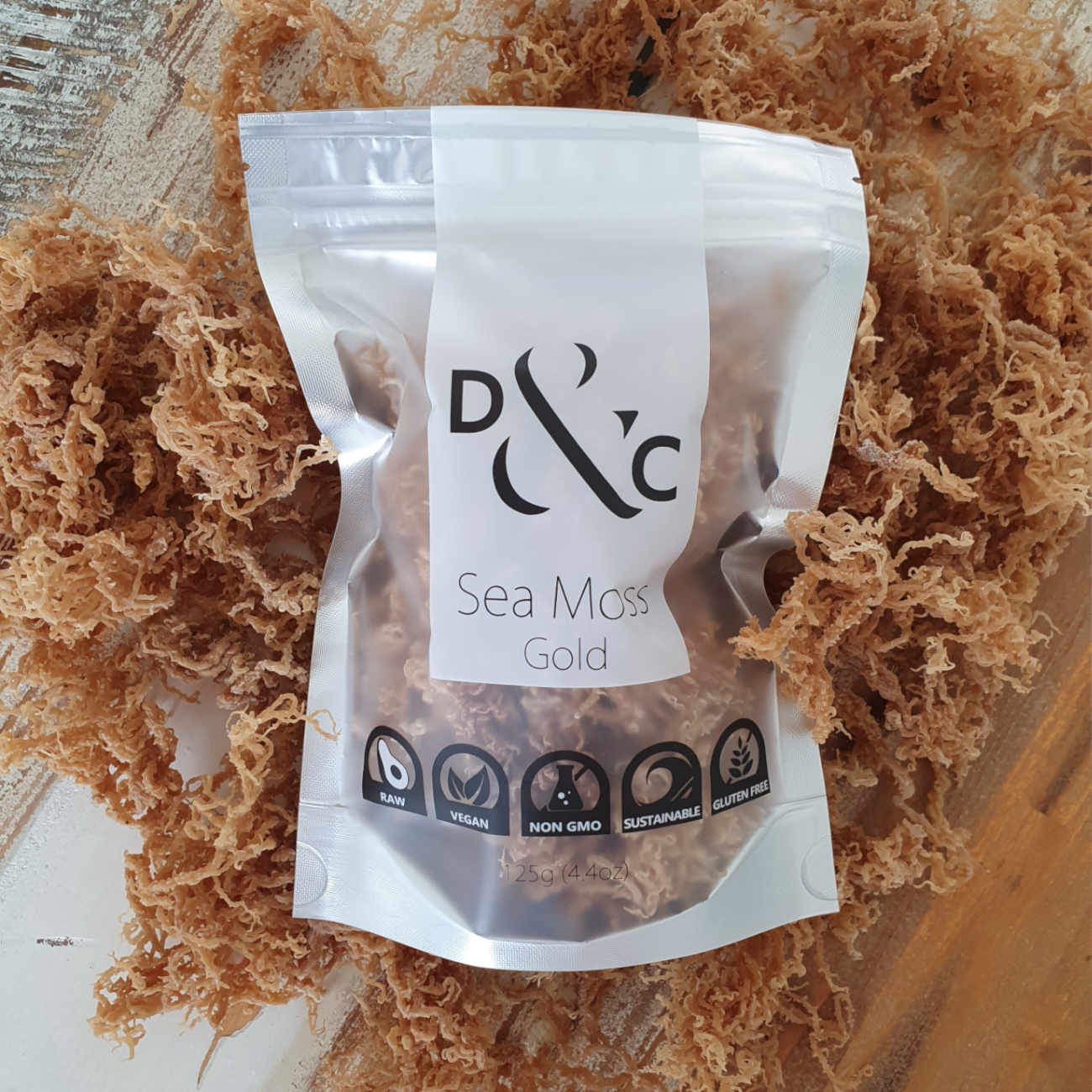
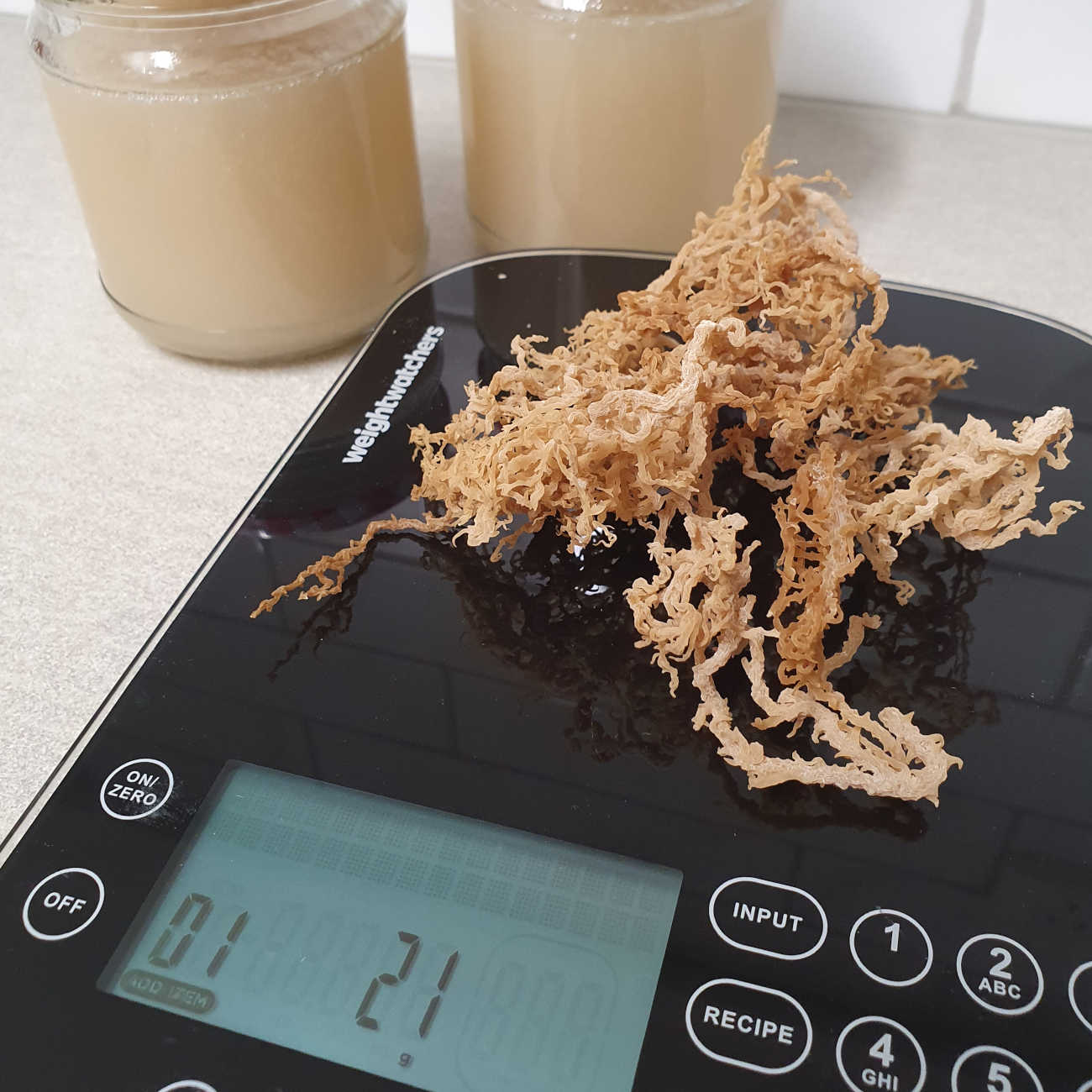

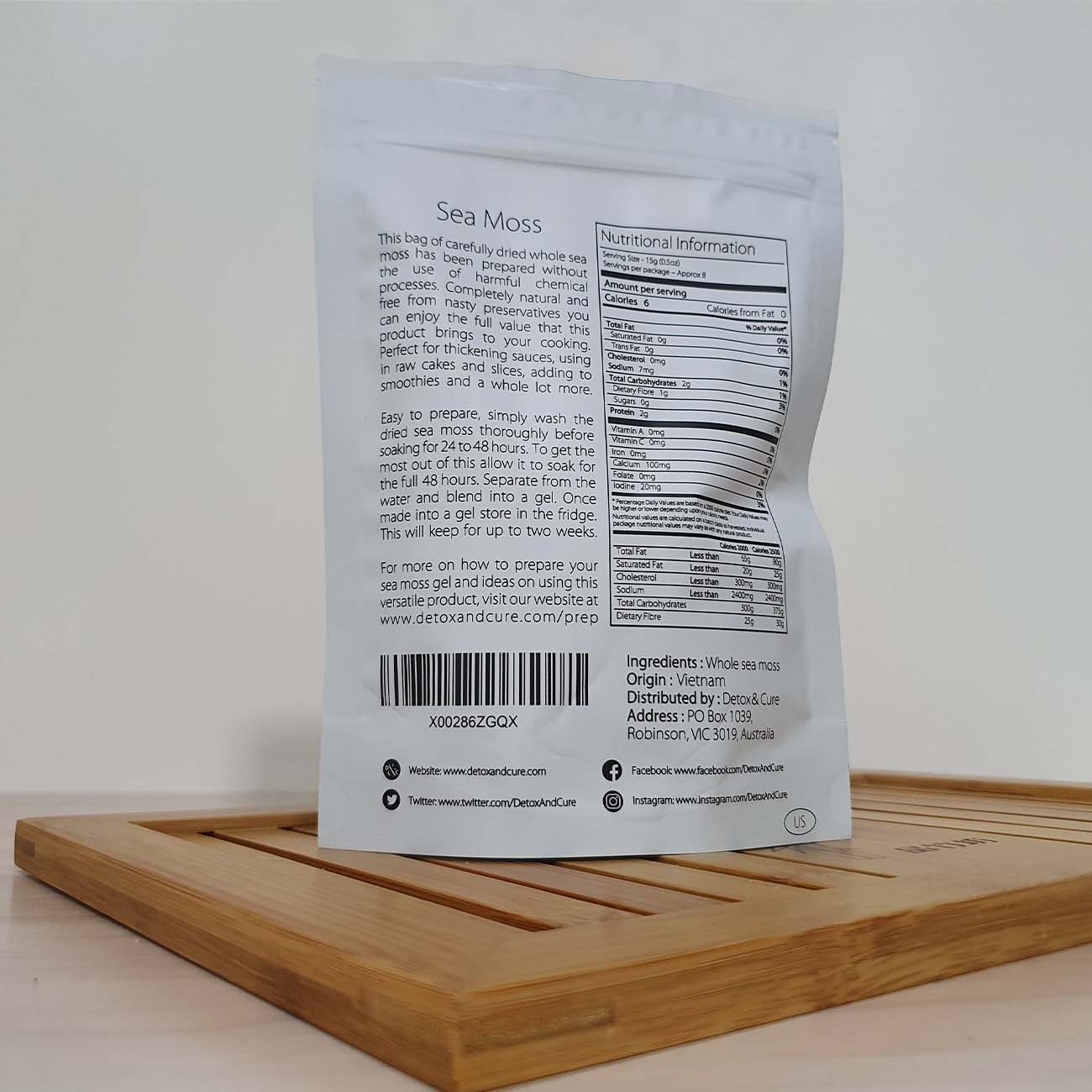
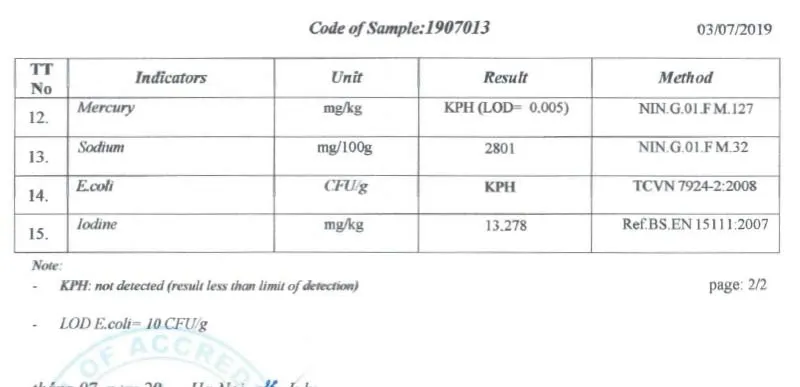

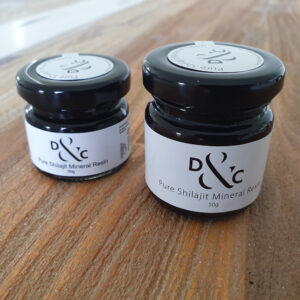

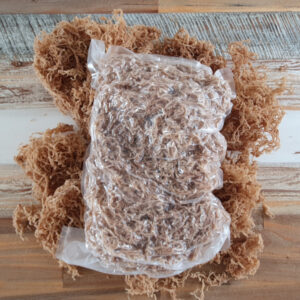
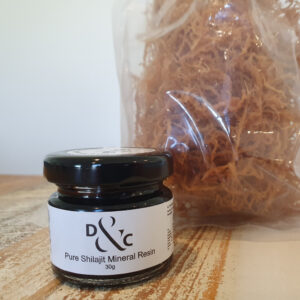
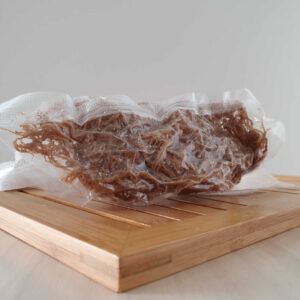
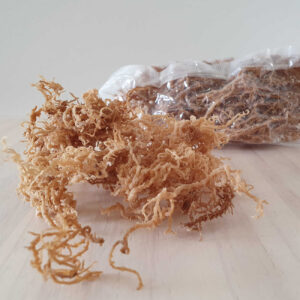
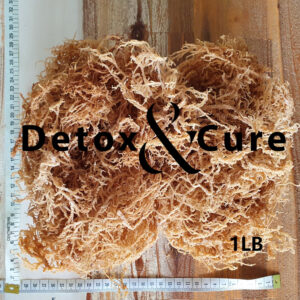
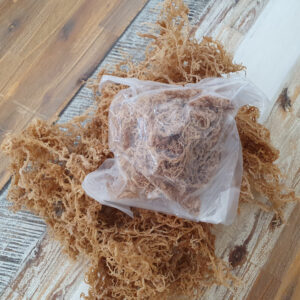

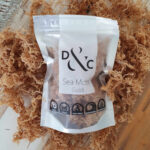
Hue –
I have naturally oily skin, so I often use a face mask to provide the nutrients my skin needs. I have to be careful of what beauty products I use as I get acne around my nose.
After a friend told me about using sea moss in a face mask I did some research on the internet and I found out that people have used seaweed/sea moss for skin care for a long time, it has properties that prevent aging as it contains collagen and essential minerals that are good for your skin. It also has natural anti-inflammatory properties that occur in marine algae and reduce swelling caused by acne, it soothes the skin quickly. Sea moss is also very good at absorbing toxins from the skin, it also acts as a cleanser to remove dead cells and impurities on the skin’s surface.
After reading about all the benefits I decided to give it a go. So I soaked some sea moss in a bowl of clean water for 48 hours, I found that the water it had been soaked in had a soapy texture and was slightly thicker, putting the rehydrated sea moss in the blender with a little of the water that the sea moss had soaked in, I blended it for a few minutes until it was smooth and thick (sort of like wood glue). After that, I cleaned my face and started putting paste on, after about 15 minutes, my skin already felt tighter, I left it on my face and went to bed, the following morning I washed my face with warm water.
I was impressed with the effect as my skin was visibly smooth and substantially less oily, after 2 weeks of using a sea moss mask everyday, I found that it had an amazing effect. My skin feels more elastic and the pores around my nose seemed to have shrunk pushing out the blackheads gradually.
After experiencing the benefits for myself I cant help but recommend it to others.
Suzanna B. –
I wasn’t aware of how helpful sea moss is for my health until Matt and Christine spoke to me about this.
Then I started hearing about it in other places.
I like the raw product they provide. I feel confident it is wholesome and preserves the natural vitamins and source minerals.
Love the effect on my skin and gut health.
Thank you so much Matt and Christine.
Debbie –
I love this Sea Moss!. I simply add this to my morning smoothie & I’ve noticed that it’s improved the texture of my skin. It also suppresses my appetite. I definitely recommend sea moss from detox & cure & I will continue to use this.
Wayne –
Bought a bag of sea moss gold after hearing about it through a friend. It has proven to be a great product with great results. The fact that it is all natural makes it even better!! Thanks Detox and Cure!!
marina –
I used the sea moss on my face and was so impressed to feel my skin tighten up. There was a visible difference. I also put the gel on under my makeup and you can’t tell. I love it! Thank you D&C.
Felecia –
Hi Christine would like to say that I have used the Irish sea moss and I am over the moon with the product very happy makes a perfect gel great smell of freshness and quiet a pleasant taste and great for my skin condition
Errol –
Very good Sea Moss, 100 % natural product, its clean, well packaged and makes a nice gel, delivery was quick too. Detox&cure is where I will be buying my Sea Moss from now on. Thanks